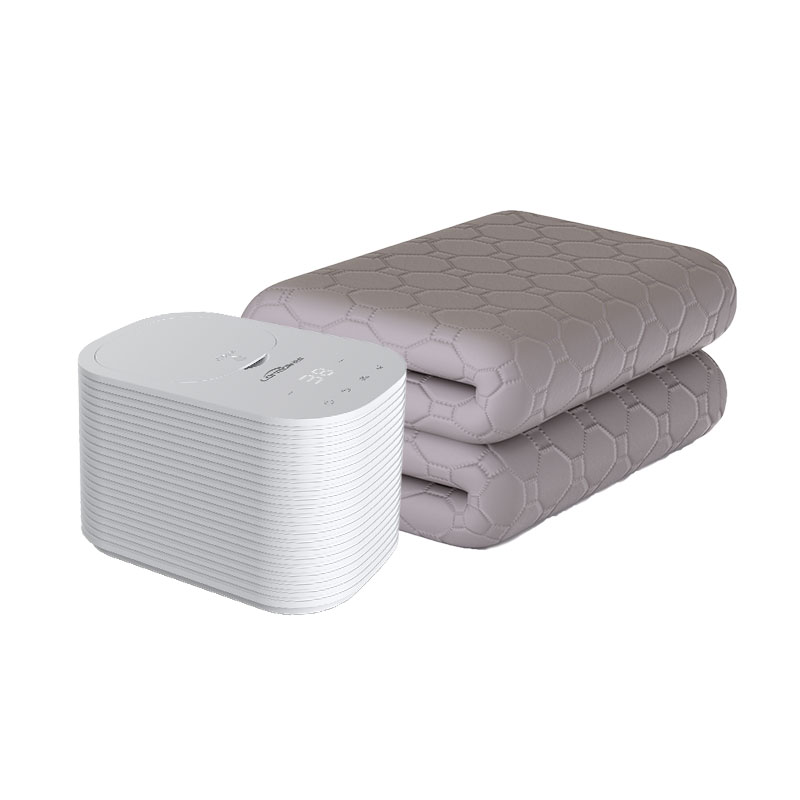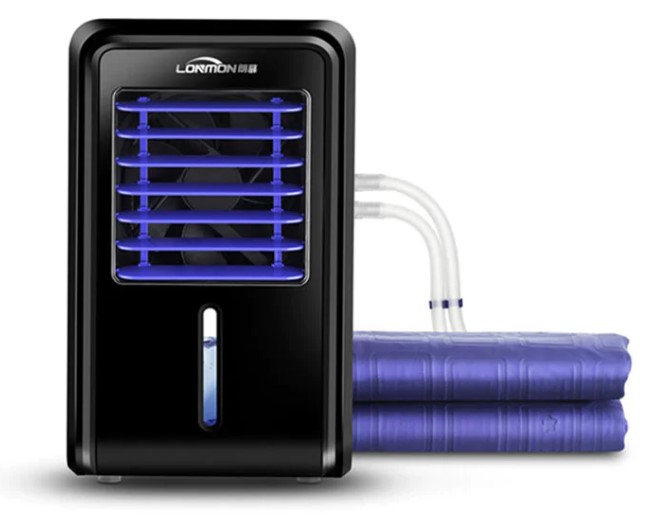Basic principles of water-cooled mattress temperature control system
Water-cooled mattresses adjust the temperature of mattresses by circulating cold water. Its temperature control system is mainly composed of water circulation pump, cooling device, temperature sensor and controller. There is a circulation pipe inside the water-cooled mattress. The cold water is driven by the pump and flows along the pipe to take away the heat on the surface of the mattress to achieve the purpose of cooling. The temperature sensor detects the water temperature or the surface temperature of the mattress in real time and feeds it back to the controller. The controller adjusts the pump speed and the working state of the cooling device according to the preset temperature value to maintain the stability of the mattress temperature. The overall temperature control system realizes dynamic adjustment through closed-loop control, which can better adapt to environmental changes and user needs.
Factors affecting the temperature control accuracy of water-cooled mattresses
Temperature control accuracy refers to the ability of the system to maintain the target temperature, that is, the error range between the actual temperature and the set temperature. The temperature control accuracy of water-cooled mattresses is affected by many factors. The first is the sensitivity and accuracy of the temperature sensor. The excellent performance of the sensor can accurately reflect the temperature change and reduce the measurement error. Secondly, the adjustment algorithm and response speed of the controller also affect the temperature control effect. Complex and optimized algorithms help to quickly correct temperature deviations. Furthermore, the design of the water circulation system plays an important role in the stability of temperature control. For example, the reasonable matching of water flow uniformity and circulation speed can help achieve uniform temperature distribution. Environmental factors such as room temperature fluctuations and changes in user body temperature will also have a certain impact on the accuracy of temperature control.

Technical characteristics of water-cooled mattress response speed
The response speed is reflected in the length of time it takes for the temperature control system to respond to temperature changes. In water-cooled mattresses, the response speed is restricted by the efficiency of the water circulation system, the power of the cooling device, and the controller adjustment mechanism. The larger the flow rate of the circulation pump, the faster the cold water flows through the mattress, and the heat conduction efficiency is correspondingly improved, thereby improving the response speed. The cooling capacity of the cooling device directly determines the rate at which the water temperature drops. An efficient cooling system can quickly reduce the water temperature and shorten the cooling time. Real-time monitoring and rapid adjustment of the controller ensure that the system responds to temperature deviations in a timely manner. Overall, the response speed of the water-cooled mattress is competitive among similar cooling products and can meet the temperature adjustment needs of most users.
Comparison of measured data of temperature control accuracy and response speed
In order to more intuitively understand the temperature control performance of water-cooled mattresses, the following table summarizes the measured data of temperature control accuracy and response speed of several typical water-cooled mattresses on the market.
As can be seen from the table, the temperature control accuracy of most water-cooled mattresses is controlled between ±0.5 and ±0.8 degrees Celsius, and the response speed is generally controlled within the range of 7 to 12 minutes, which can adapt to the adjustment of different ambient temperatures and user needs.
Technical path to improve temperature control accuracy
In order to improve the temperature control accuracy of water-cooled mattresses, manufacturers continue to optimize the selection of temperature sensors and use sensors with higher sensitivity and low drift to ensure the accuracy of temperature measurement. At the same time, the control algorithm tends to be intelligent, combining PID (proportional-integral-differential) control, fuzzy control and other algorithms to improve the accuracy and stability of regulation. In terms of circulation system design, the water path layout and water pump performance are optimized to make the cold water flow more evenly and avoid local temperatures being too high or too low. Material selection has also been improved, and the thermal conductive material inside the mattress can transfer heat more evenly and reduce temperature gradients. With the advancement of technology, these paths provide a solid foundation for improving temperature control accuracy.
Practical experience in optimizing response speed
The optimization of response speed mainly starts from improving water circulation efficiency and cooling system performance. By increasing the flow rate of the circulation pump and improving the design of the pump body, the water flow speed is accelerated and the heat transfer is faster, thereby shortening the temperature adjustment time. In terms of cooling equipment, more efficient refrigeration compressors or heat exchangers are used to increase the cooling rate of cold water. The controller response mechanism is also constantly improving, increasing the detection frequency and adjustment speed, and reducing the temperature adjustment lag time. At the same time, combined with user usage scenarios, optimize temperature presets and adjustment strategies to avoid frequent start and stop, and ensure the smooth and efficient operation of the system. These measures work together to improve the response speed.

Relationship between user experience and temperature control performance
The temperature control accuracy and response speed of water-cooled mattresses directly affect the user experience. Mattresses with higher temperature control accuracy can provide a more stable sleeping environment and avoid sleep discomfort caused by temperature fluctuations. Fast response speed means that when the temperature changes, the mattress can adjust the temperature in time to meet the user's temperature needs in different time periods. In addition, the quiet operation and user-friendly operation interface of the temperature control system also have a certain impact on the overall experience. Users generally report that water-cooled mattresses can improve comfort and sleep quality when the temperature control performance is reasonable. Good temperature control design helps meet personalized needs and adapt to changing environmental conditions.
Future development trend of temperature control performance of water-cooled mattresses
The future development trend of temperature control performance of water-cooled mattresses is mainly focused on intelligence, precision and energy saving. In terms of intelligence, it will rely more on Internet of Things technology to achieve remote control and automatic adjustment, and optimize temperature control strategies based on user habits and environmental data. Precision relies on more advanced sensors and control algorithms to reduce temperature errors and improve the response sensitivity of the temperature control system. The energy-saving trend prompts the system to minimize energy consumption while maintaining good temperature control performance, adopt high-efficiency circulation pumps and cooling devices, and optimize insulation design. Future products may also combine multiple temperature control methods to achieve seamless switching between heating and cooling to meet different seasonal and individual needs.

 英语
英语 中文简体
中文简体









